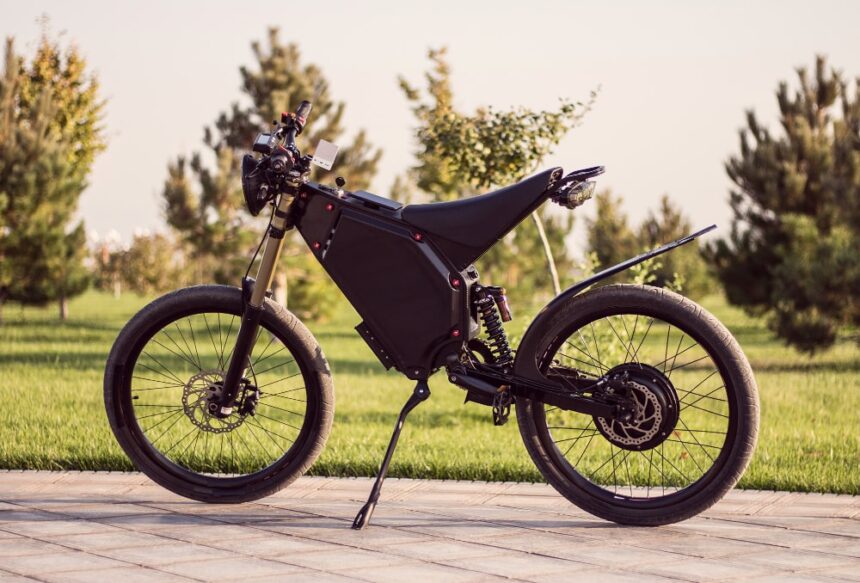Transforming a regular bicycle into an electric bike is an exciting way to enhance your cycling experience without purchasing a brand-new e-bike. An electric bike conversion kit adds power to your ride, making commutes smoother, hills less daunting, and long journeys more enjoyable. It explores everything you need to know about choosing the perfect electric bike conversion kit. From understanding different types to evaluating key features and installation steps, this article will help you make an informed decision.
Why Convert Your Bike to Electric?
Converting your bike to electric power is a practical and budget-friendly alternative to buying a new e-bike. These kits allow you to keep your trusted bicycle while adding the convenience of motorized assistance. Whether you’re a daily commuter, a recreational rider, or someone seeking extra support on tough terrains, a conversion kit can transform your ride. It’s also an eco-conscious choice, reducing waste by upgrading an existing bike instead of purchasing a new one. With a range of kits available, you can select one that aligns with your riding style, budget, and technical skills.
Advantages of Electric Bike Conversion Kits
Using an electric bike conversion kit offers significant savings compared to purchasing a new e-bike, which can cost thousands. Most kits range from $300 to $1,500, making them an affordable option for many cyclists. You get to retain a bike that fits you perfectly or holds sentimental value, adding only the electric components you need. These kits are customizable, allowing you to choose the power level and features that suit your specific needs, whether for city streets or rugged trails. Additionally, converting a bike is a sustainable choice, as it extends the life of your current ride and reduces the environmental impact of manufacturing a new one.
Who Should Use a Conversion Kit?
Electric bike conversion kits are ideal for cyclists who want the benefits of an e-bike without replacing their current bicycle. They’re perfect for commuters facing hilly routes, leisure riders looking to extend their range, or older cyclists needing a bit of extra help. However, your bike must be in good condition to handle the added stress of a motor. Kits are not suitable for very old or damaged bikes, as the frame and components need to withstand increased power and speed. If your bike is sturdy and well-maintained, a conversion kit can be a game-changer for your cycling experience.
Types of Electric Bike Conversion Kits
Understanding the different types of electric bike conversion kits is crucial to finding the right one for your bike and riding goals. Each type has distinct characteristics, making them suitable for specific terrains and preferences. This section explores the three main types of kits available in 2025.
Front-Wheel Conversion Kits
Front-wheel conversion kits replace your bike’s front wheel with one that has an integrated electric motor. This motor pulls the bike forward, providing assistance as you pedal. These kits are generally easy to install and more affordable than other options, making them popular among beginners. They work well on flat terrains and are compatible with most standard bikes. However, they can slightly alter steering dynamics and may struggle on steep hills due to limited traction. For city commuters or casual riders on relatively flat routes, a front-wheel kit is a practical choice.
Rear-Wheel Conversion Kits
Rear-wheel kits replace the back wheel with a motorized one, pushing the bike from behind. This setup offers better traction than front-wheel kits, making it ideal for hilly areas or mixed terrains. The added power at the rear provides a more balanced ride, especially for commuters tackling varied routes. Installation can be more complex, particularly on bikes with derailleur gears, as you may need to adjust the drivetrain. For riders seeking reliable performance on diverse landscapes, a rear-wheel conversion kit is a strong contender.
Mid-Drive Conversion Kits
Mid-drive kits position the motor near the bike’s bottom bracket, driving the chain to power the rear wheel. This design distributes weight evenly, enhancing balance and efficiency. Mid-drive kits excel at climbing steep hills and are favored by mountain bikers or those seeking high performance. However, they are typically more expensive and require advanced mechanical skills for installation. They may also cause faster wear on the bike’s drivetrain due to increased torque. For riders prioritizing power and versatility, a mid-drive kit is an excellent option.
Key Considerations When Choosing a Conversion Kit
Selecting the best electric bike conversion kit involves evaluating several critical factors to ensure compatibility and performance. Here’s what to focus on when making your decision.
Motor Power and Performance
The motor’s power, measured in watts, determines how fast and effectively your bike can handle various terrains. In regions like the UK and EU, e-bike regulations cap motor power at 250W and speed at 15.5 mph to remain street-legal without a license. In the US, some states allow up to 750W, but local laws vary, so always check regulations. A 250W motor suits casual riders on flat routes, while a 500W to 750W motor is better for hills or heavier riders. High-powered motors above 1000W offer thrilling performance but may require licensing in certain areas.
Battery Range and Capacity
The battery’s capacity, measured in watt-hours, dictates how far you can travel on a single charge. Most kits come with 250-500 Wh batteries, offering 20-50 miles of range depending on terrain, rider weight, and assist level. Lithium-ion batteries are standard for their efficiency and longevity. A removable battery is a practical feature, allowing easy charging and better security. Consider your typical ride length when choosing a battery to avoid running out of power mid-journey.
Ease of Installation
Installation complexity varies by kit type. Some, like the Swytch or CLIP kits, are designed for quick setup with minimal tools, making them beginner-friendly. Others, like mid-drive kits, may require specialized tools or professional assistance. Check if your local bike shop can install the kit, as some shops avoid working on converted bikes. Reviewing the kit’s manual beforehand can help you gauge whether it’s a DIY project or one for a professional.
Bike Compatibility
Not every kit fits every bike. Verify that the kit matches your bike’s wheel size, brake type, and frame design. For instance, some kits work only with 26” or 28” wheels and may not suit bikes with suspension forks. Ensuring compatibility prevents installation issues and ensures a safe ride.
Extra Features to Enhance Your Ride
Modern kits offer features to improve functionality and convenience. A digital display showing speed, battery level, and assist mode is a valuable addition for monitoring your ride. Some kits include a throttle for motor-only operation, though this may not be legal in all areas. Pedal-assist systems, which require pedaling to activate the motor, are more common and widely accepted. Regenerative braking, found in kits like the CLIP, can extend battery life by recapturing energy during braking.
Popular Electric Bike Conversion Kits for 2025
Swytch GO Kit
The Swytch GO is a front-wheel kit with a 250W motor and a lightweight battery (180-270 Wh) offering 15-30 miles of range. Priced around $349, it’s an affordable choice for urban commuters. Its compact design and removable battery make it easy to install and store, ideal for those new to e-bike conversions.
Bafang BBS02 Mid-Drive Kit
The Bafang BBS02 is a powerful mid-drive kit with a 750W motor and 500-1000 Wh battery, providing 30-60 miles of range. Costing $500-$1,000, it’s suited for riders tackling steep hills or demanding trails. Its installation is more complex, but the performance makes it a favorite among experienced cyclists.
CLIP Friction-Drive Kit
The CLIP kit uses a unique friction-drive system, attaching to the front wheel without replacing it. With a 250W motor and a quick-charging lithium-ion battery, it’s priced at $349. Its tool-free installation and portability make it perfect for short city commutes.
Installing Your Electric Bike Conversion Kit
Installing a conversion kit requires careful planning to ensure a smooth process. Start by confirming the kit’s compatibility with your bike’s specifications. Gather any necessary tools, such as Allen wrenches or screwdrivers, though some kits like the CLIP need none. For wheel-based kits, replace the appropriate wheel with the motorized one and secure it properly. For mid-drive kits, mount the motor at the bottom bracket and adjust the chain. Attach the battery to the frame or handlebars, ensuring it’s stable and accessible. Connect all electronics, like the controller and display, routing cables neatly to avoid interference. Test the bike thoroughly to ensure the motor, brakes, and gears function correctly. If you’re unsure, consider professional installation to avoid errors.
Safety Tips for a Successful Conversion
Safety is critical when converting your bike. Upgrade your brakes if needed, as the added speed and weight demand stronger stopping power. Ensure your bike’s frame is robust enough to handle the motor’s stress. Always verify that your kit complies with local e-bike regulations to avoid legal issues. Wearing a helmet and checking the bike’s components regularly can further enhance safety.
Are Conversion Kits Worth It?
Electric bike conversion kits can be a cost-effective alternative to new e-bikes, but they’re not for everyone. If your bike is in poor condition, the added motor stress could cause mechanical issues. A new e-bike, typically priced between $1,500 and $3,000, may offer better reliability and a warranty. However, if your bike is sturdy and you’re comfortable with installation, a kit can save you money while delivering the e-bike experience you want.
Conclusion
An electric bike conversion kit is a smart way to upgrade your bicycle into a powerful e-bike tailored to your needs. By understanding the types of kits, key features, and installation requirements, you can select the perfect kit for your riding style and budget. Whether you’re commuting through the city or exploring challenging trails, these kits offer a cost-effective and eco-friendly way to enhance your cycling experience. Ensure your bike is in good condition, verify local regulations, and follow safety guidelines for a smooth and enjoyable ride. With the right kit, you can transform your bike and rediscover the joy of cycling with electric power.






